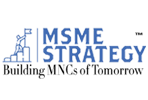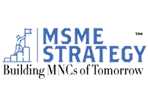15 Essential KPIs for SME Growth: A Strategic Framework for Global Markets
In today’s interconnected global economy, Small and Medium-sized Enterprises (SMEs) face unprecedented challenges and opportunities. Whether operating in emerging markets across Southeast Asia, navigating regulatory complexities in the European Union, or scaling operations in North America, successful SME leaders understand that data-driven decision making isn’t optional—it’s survival.
The financial metrics that distinguish thriving SMEs from those that merely survive extend far beyond basic revenue tracking. They encompass a sophisticated understanding of operational efficiency, market positioning, and capital optimization that transcends geographical boundaries.
The Universal Language of SME Performance
Regardless of whether your SME operates from Singapore’s bustling financial district, Germany’s industrial heartland, or Brazil’s emerging tech corridors, certain financial metrics serve as universal indicators of business health. These Key Performance Indicators (KPIs) form the backbone of strategic decision-making for seasoned professionals who understand that sustainable growth requires more than intuition—it demands measurable insights.
Core Financial Health Indicators
Cash Flow Management remains the fundamental pillar of SME sustainability. In volatile global markets, where currency fluctuations and supply chain disruptions can dramatically impact operations, maintaining robust cash flow visibility becomes even more critical. Successful SMEs implement sophisticated cash forecasting models that account for multi-currency operations, seasonal variations, and market-specific payment cycles.
The Gross Profit Margin serves as your first line of defense against market pressures. While industry benchmarks vary globally—manufacturing SMEs in China may operate on different margins than service providers in the UK—the principle remains constant: understanding your cost structure relative to revenue generation capabilities is non-negotiable.
Net Profit Margin provides the ultimate test of operational efficiency. For SMEs operating across multiple jurisdictions, this metric must account for varying tax structures, regulatory compliance costs, and local market dynamics that can significantly impact bottom-line performance.
Leverage and Investment Metrics
The Debt-to-Equity Ratio takes on particular significance in today’s global lending environment. With interest rates varying dramatically across regions and access to capital markets differing by geography, SMEs must maintain optimal capital structures that provide flexibility while minimizing risk exposure.
Return on Investment (ROI) analysis becomes increasingly complex for global SMEs. Successful leaders evaluate ROI not just in absolute terms, but relative to opportunity costs across different markets, considering factors such as political stability, currency risk, and market maturity.
Liquidity and Operational Efficiency
The Current Ratio and Quick Ratio serve as early warning systems for potential liquidity crises. In interconnected global markets, liquidity challenges can cascade quickly across operations, making these metrics essential for proactive risk management.
Working Capital optimization requires sophisticated understanding of global supply chains, payment terms, and seasonal variations across different markets. SMEs that excel in this area often implement centralized treasury functions that provide real-time visibility across all operations.
Customer and Market Dynamics
Customer Acquisition Cost (CAC) varies dramatically across global markets, influenced by local competition, regulatory requirements, and cultural preferences. Sophisticated SMEs develop market-specific CAC targets while maintaining overall portfolio profitability.
The Sales Growth Rate must be evaluated within the context of local market conditions, competitive dynamics, and economic cycles. A 10% growth rate in a mature European market may represent exceptional performance, while the same rate in a rapidly expanding Southeast Asian market might indicate underperformance.
Operational Excellence Indicators
Days Sales Outstanding (DSO) and Days Inventory Outstanding (DIO) require careful calibration for global operations. Payment cycles vary significantly across cultures and regulatory environments—what’s considered normal in Germany may be problematic in Brazil.
Return on Assets (ROA) becomes particularly relevant for capital-intensive SMEs. In markets where asset costs vary dramatically, this metric helps identify optimal resource allocation strategies across different operational bases.
Budget Variance analysis must account for currency fluctuations, local inflation rates, and market-specific operational challenges that can impact planned versus actual performance.
Strategic Implementation Across Global Markets
The sophistication required to effectively monitor these KPIs across multiple markets cannot be understated. Leading SMEs implement integrated financial management systems that provide real-time visibility across all operations while accounting for local market nuances.
Currency hedging strategies, transfer pricing policies, and centralized cash management become critical enablers for accurate KPI measurement and comparison across different operational bases.
The Competitive Advantage of Measurement
SMEs that master these metrics gain significant competitive advantages in global markets. They can identify opportunities and threats faster, allocate resources more effectively, and make strategic decisions based on comprehensive data rather than regional intuition.
The ability to benchmark performance across different markets while maintaining operational flexibility represents a key differentiator in today’s competitive landscape.
Actionable Implementation Framework
Immediate Actions (0-30 days):
- Conduct a comprehensive audit of your current KPI measurement capabilities across all operational bases
- Implement standardized reporting formats that account for local currency and regulatory variations
- Establish monthly KPI review processes with market-specific context and global benchmarking
- Identify critical gaps in data collection and implement corrective measures
Short-term Strategy (1-6 months):
- Deploy integrated financial management systems that provide real-time, multi-currency visibility
- Develop market-specific KPI targets based on local competitive and economic conditions
- Create automated alert systems for critical thresholds across all 15 KPIs
- Establish quarterly strategic reviews that incorporate KPI trends with market intelligence
Long-term Strategic Positioning (6-24 months):
- Build predictive analytics capabilities that incorporate KPI trends with external market data
- Develop sophisticated scenario planning models using historical KPI performance
- Create dynamic resource allocation frameworks based on real-time KPI performance across markets
- Implement advanced treasury management functions that optimize working capital globally
Continuous Improvement:
- Establish annual KPI framework reviews to ensure relevance in changing global markets
- Develop internal capabilities for advanced financial analysis and strategic planning
- Create knowledge-sharing mechanisms across different operational bases
- Build strategic partnerships with local financial and advisory experts in key markets
For SME leaders seeking to implement these sophisticated measurement frameworks, MSME Strategy Consultants (global.msmestrategy.com) provides specialized expertise in developing and deploying global KPI strategies. Our experienced consultants are ready to help you transform financial data into competitive advantage across international markets.
#GlobalMSMEStrategy #SMEGrowth #KPIManagement #GlobalBusiness #FinancialMetrics #SMEStrategy #BusinessIntelligence #GlobalOperations #SMEFinance #StrategicPlanning






